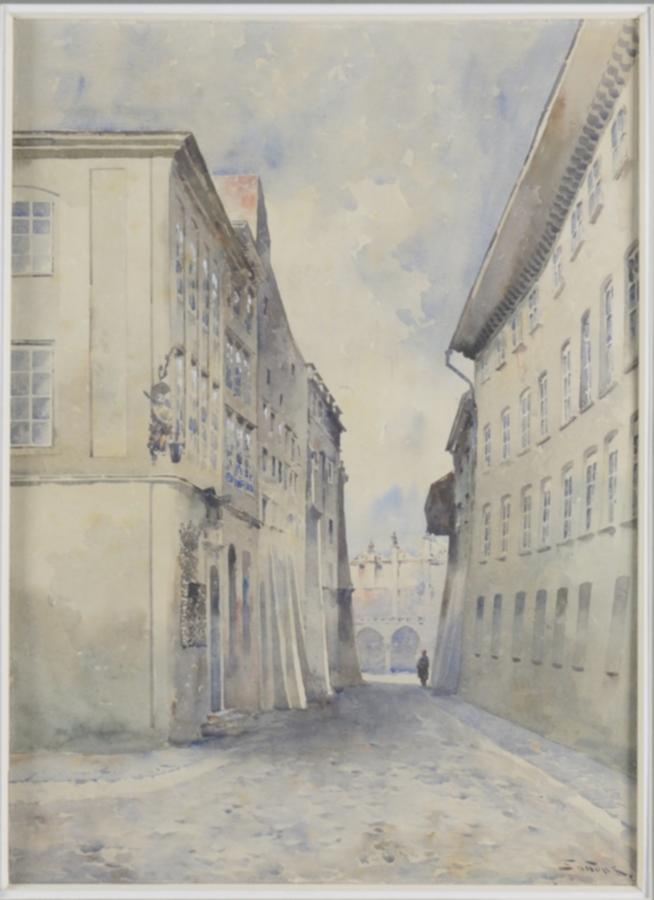Description:
Stanisław Tondos (1854-1917) studied at the Krakow Academy of Fine Arts under Władysław Łuszczkiewicz and Jan Matejko, as well as briefly in Vienna and Munich, with his education supplemented by numerous travels. He exhibited in Krakow and Warsaw. He most often used the watercolor technique to paint views of Krakow, Warsaw,
Description of the painting:
This Krakow street connecting the market square and the Planty area owes its name to the presumed function of the place in the 15th century, where hay was sold. The painting depicts the perspective of the street in a typical pale, semi–transparent way, typical of aquarelle, revealing great skill of the artist in using this difficult painting technique, which doesn‘t allow for any correction. In the distance one can see the arcades of the cloth hall. Barely one dark–grey figure stands on the edge of the street, enlivening the otherwise dead cityscape, or “weduta“ as they are known in the works of Stanisław Tondos. The emptiness of the Krakow Old Town on a bright day can be a bit surprising, as the city was always very crowded.
Tondos‘ emptiness in his paintings has its justification. Despite his great skill in depicting urban architecture with great attention to detail, Tondos did not have enough talent to paint figures. Some of his paintings were created with the help of Juliusz and Wojciech Kossak, who supplemented them with staffage – images of characters or animals. This may testify to the artist‘s humility, focusing on depicting views, allowing himself to be helped in the field of figures.
He was an advocate of promoting art on postcards, so he tried to photographically capture the beautiful and historic places of Krakow. He also painted in many other Polish cities, such as Warsaw or Torun, but also European cities such as Vienna, Munich, Venice, Florence or Prague.


